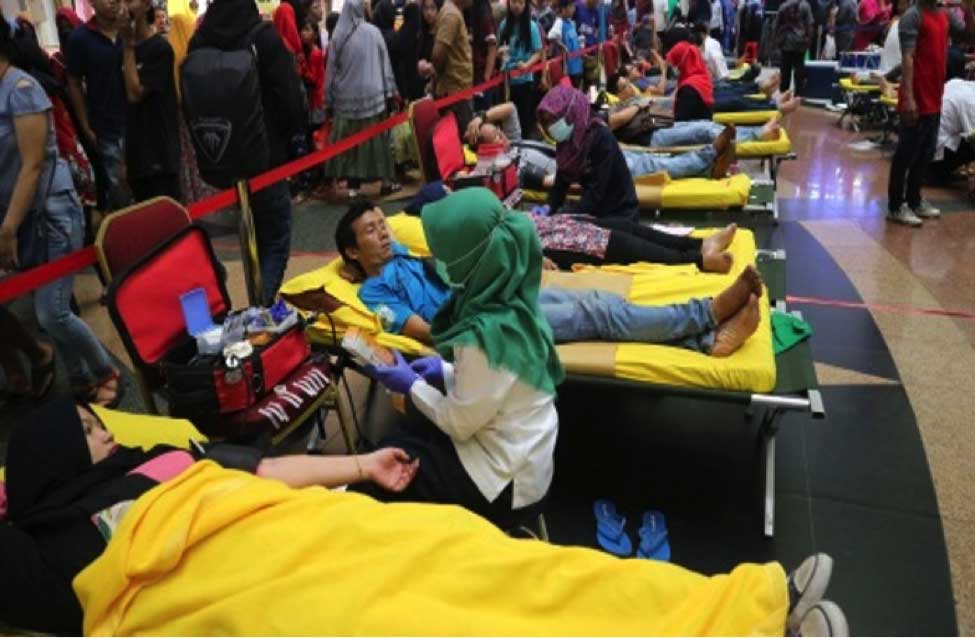By: Ivan Christianto – PR Consultant of Fortune PR
On 2014 Malaysia’s aviation industry suffered from an unprecedented number of brutal air crises. Three Malaysia-based aircraft, Malaysia Airlines (MAS) MH370 and MH17, also AirAsia QZ8501 have apparently crashed with no survivors. How do MAS and AirAsia compare when responding to the crisis?
In a world with a 24-hour news cycle, news travels very fast, especially bad news. Having a crisis communication plan is crucial if an organization wants to survive and recover from a crisis. How MAS and AirAsia respond to a crisis not only affect the outcome of the crisis itself, it also affects the company’s valuable reputation and survival.
A brief about both company’s crises, a study from University of Amsterdam[1] explained the MAS’ plane crash on 2014. The first is flight MH370 from Kuala Lumpur to Beijing, which disappeared with 239 passengers and crew. Debris found in the Indian Ocean has confirmed the plane went down but what happened remains a mystery. Four months after that incident, flight MH17 heading to Kuala Lumpur from Amsterdam was shot down over Ukrainian territory, killing all 298 passengers and crew. The devastating MH370 and MH17 disasters caused bankruptcy as MAS’ flight bookings dried up. They even had to cut 6000 employees. MAS got delisted and Khazanah took it private in 2014, as part of RM 6 billion or US$ 1.5 billion plan to help it return to profit. The disasters ruined MAS’ business and reputation.
A few months after MAS’ incident, according to BBC[2] AirAsia QZ8501 crashed into the Java Sea off Borneo shortly after take-off. The incident was also left with no survivors. The Airbus A320-200, carrying 162 people from Surabaya in Indonesia to Singapore, was just over 40 minutes into its flight when contact was lost. Investigators found that the crash was caused by repeated technical problem. The plane’s wreckage and dead bodies were recovered floating 10 miles from the plane’s last known coordinates. A total of 106 bodies were eventually found, with the rest still missing.
AirAsia has responded to this crisis much more rapidly than state carrier MAS. During the flight’s disappearance, AirAsia continued to show its responsiveness. They quickly embrace government institutions like The National Search and Rescue Agency (BASARNAS) and the police to help search for the victims. Through its website and emergency call centers, the airline has been providing families with up-to-the-minute and accurate information about the plane and search effort.
AirAsia becomes a good example when learning about aviation safety crisis management. They managed to win back the public’s heart by showing sympathy and responsibility. AirAsia took on the responsibility of the crash with Tony Fernandes as the CEO being the direct spokesperson. Fernandez clearly used the right gesture when making public apologies and took on his obligations. He showed that his company tried as best as they can and was not playing the blame game. Because of this, newspapers and websites started covering him in a positive light.
A sharp contrast from MAS, who only got lots of mockery and criticism from the public. There was no spokesperson being sent when the flight went missing. There was no information coming out, so rumors started going on with no one to clarify them. Official information made public later on were not timely updated and inconsistent. During the press conference, no company officials were pointed as a spokesperson. No company officials showed that they cared and that they are actually trying to fix the situation. We can see that MAS does not have a cohesive communications plan at that time and showed a lack of sympathy for the family members of the victims. They were clueless about what to do next. The devastating MH370 and MH17 disasters caused bankruptcy as MAS’ flight bookings dried up. They even had to cut 6000 employees. The disasters ruined MAS’ reputation.
Looking at the two comparisons of crisis response above, we can see now that AirAsia gain publics’ sympathy through their well-planned crisis management. People still fly with AirAsia as their business expand and new flight routes opened. Until today, MAS has not yet made a comeback. In travel and ticket booking apps, we can observe that the price of MAS tickets is still the cheapest compared to other airlines. This shows that they are still struggling in the regular commercial aviation market and it is still a long way to go for them.
But a major attempt for a comeback is now made under the new CEO, Peter Bellew. MAS is changing their business focus and plan to enter a new market. Starting next year, as stated in CNN[3], six of MAS’s A380 superjumbo jets will be retired from normal service and offered for charter by groups undertaking the Hajj and Umrah pilgrimages to Mecca in Saudi Arabia. The planes will be overhauled to carry as many as 715 passengers, with a business class section, prayer areas, and washing zones for feet and hands. MAS also involved the press in highlighting and buzzing about their comeback effort to the industry.
We can learn from the two crises above that it is very necessary for every company to have a plan to gain control of the situation as quickly as possible. This means controlling the message, and assuring that the company is seen by the media and others as the most reliable source of information. The company must make sure all communications deliver a strong and consistent message that conveys the right combination of confidence and caring.
International Air Transport Association (IATA), as stated in The New York Times[4], mentioned three major challenges in aviation which are safety, convenience, and sustainability. From those three points, safety is clearly the main focus for consumers’. In the end, a reputation for attention to safety can be key to an aviation company’s success for the long run.
[1] www.adaptivecycle.nl/images/Mini_case_study_MAS.pdf
[2] http://www.bbc.com/news/world-asia-30632735
[3] http://money.cnn.com/2017/04/23/investing/malaysia-airlines-ceo-peter-bellew-transformation/
[4] http://www.nytimes.com/2014/08/29/business/malaysia-airlines-financial-lossesgrow.html?_r=1










Leave a Reply